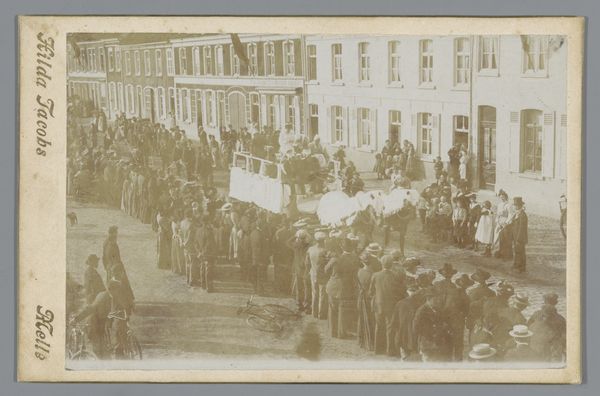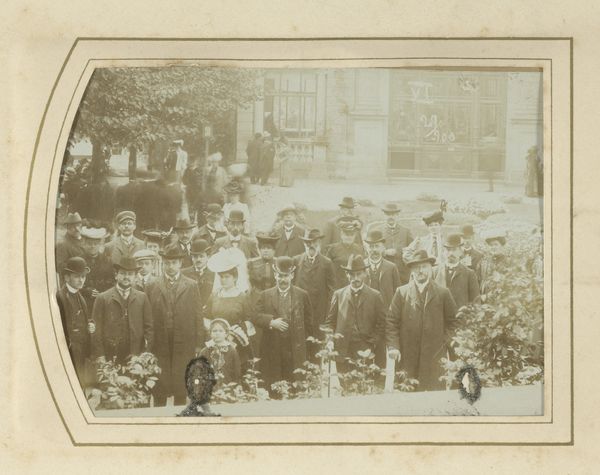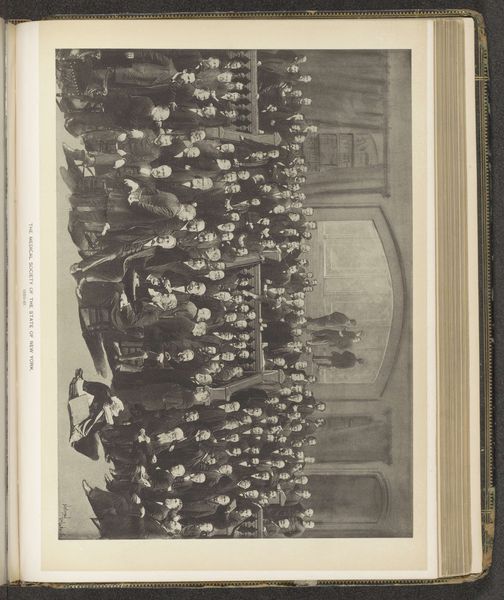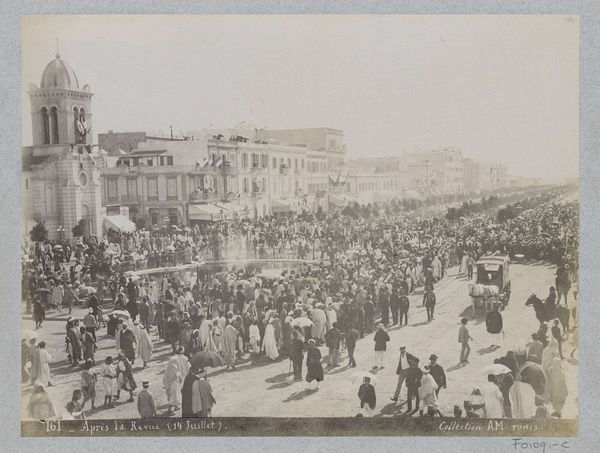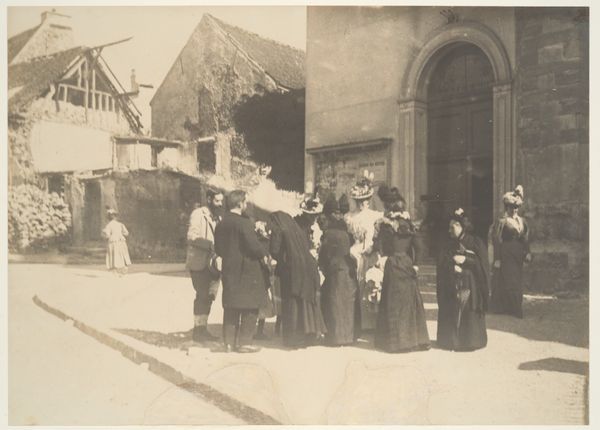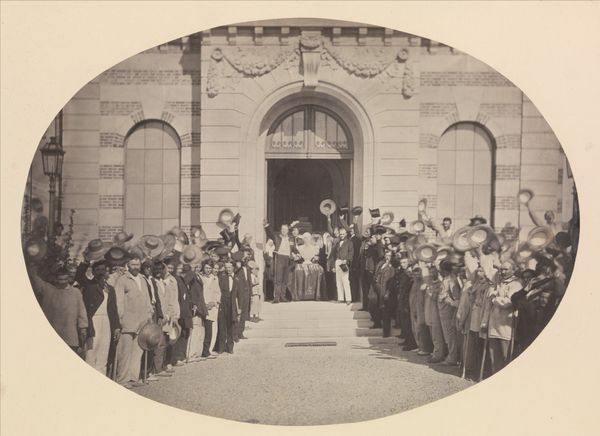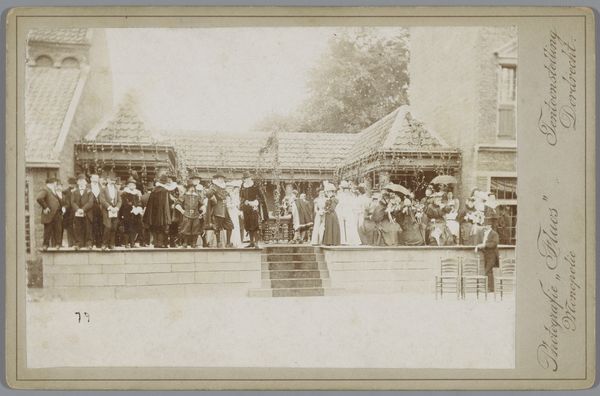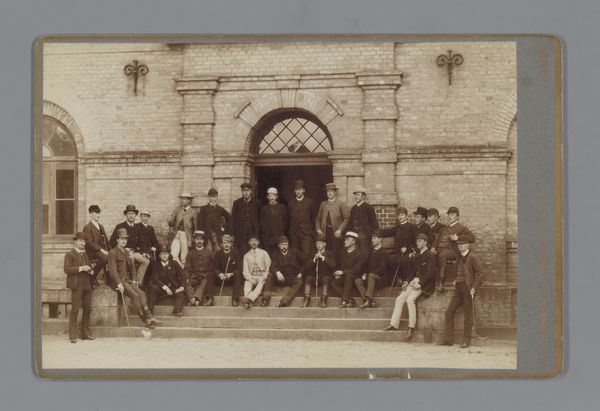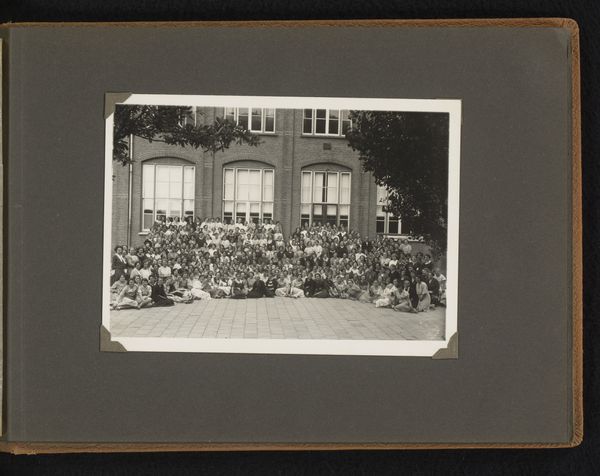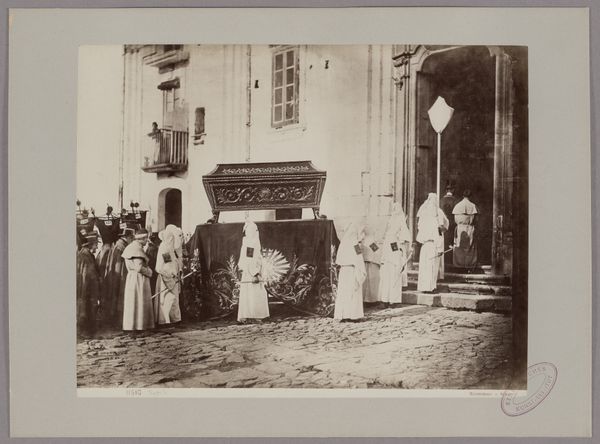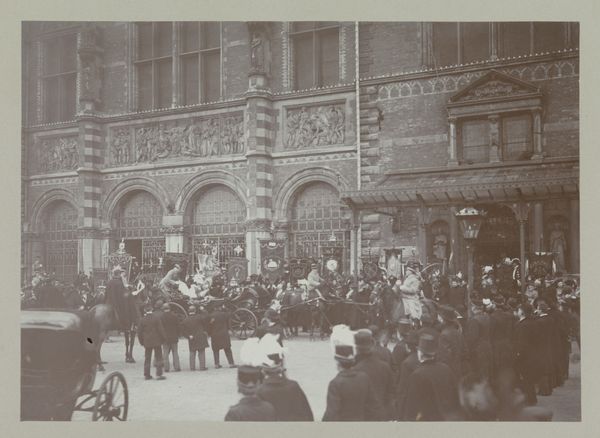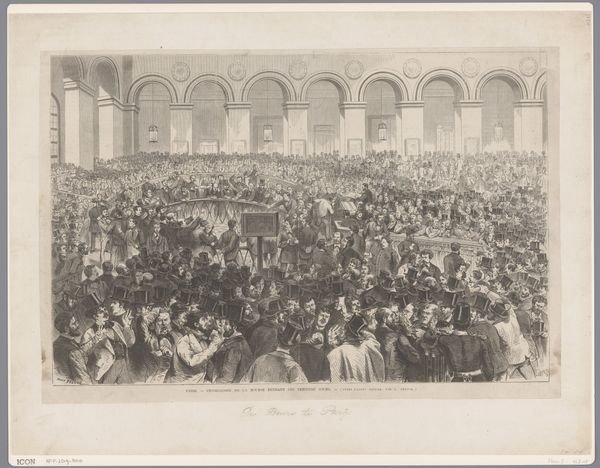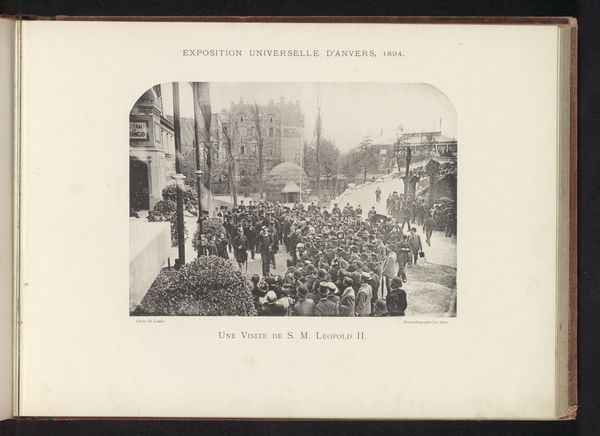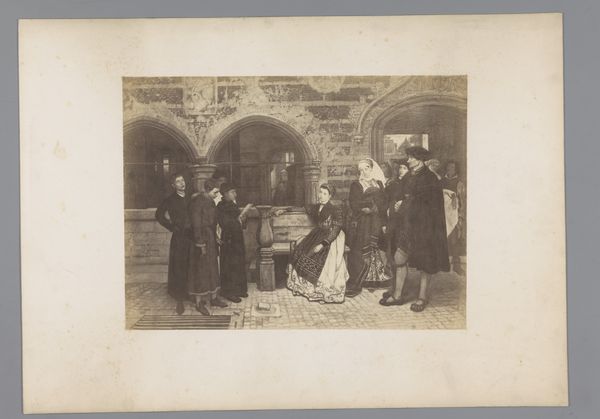
print, photography
#
portrait
# print
#
photography
#
cityscape
Dimensions: height 106 mm, width 167 mm
Copyright: Rijks Museum: Open Domain
Curator: Let’s turn our attention to “Militairen voor het stadhuis van Valkenburg,” which translates to "Military in front of the town hall of Valkenburg.” Johan Joachim Cohnen captured this moment through photography in 1901. Editor: My immediate sense is that we are looking at some kind of celebration. The people have come together, possibly for an important political declaration or something like that, right? Curator: Precisely. Consider Valkenburg's history; as a strategically important location, the presence of the military wasn't uncommon, this image also highlights their integration with the local citizenry at that moment in time. See the town hall looming behind the assemblage? As a civic structure it symbolizes institutional power and, in a way, emphasizes how authority, civilian life, and the military were all connected. Editor: Definitely. I see women dressed in turn-of-the-century attire standing rather passively amidst the mass of men in uniform; it underscores traditional gender roles of that period and society’s hierarchies, particularly in how women were confined to specific spaces within civic events like these. Curator: Absolutely. Moreover, Cohnen's perspective in capturing this photograph shows how power dynamics were on display. Notice how some faces are visible while others remain in shadow, maybe highlighting how public figures wanted to portray themselves as closer to soldiers? This moment seems carefully orchestrated, perhaps as an expression of national pride and civic duty, to reinforce particular notions around military strength and the relationship between armed forces and governance. Editor: I agree it’s about creating an image, a narrative about state power and popular support. You also start thinking who might *not* be represented here and why. Which voices were excluded or were they not considered as important by authorities, and how did that perpetuate social marginalization or inequities? Curator: Reflecting on this, it prompts us to investigate how social performances, captured through images like this, help to shape and solidify the beliefs, norms and power relations within our societies. Editor: Yes, thinking about Cohnen’s “Militairen voor het stadhuis van Valkenburg” pushes us to think about not only historical narratives but also how we can critique them from a more critically informed, equitable lens.
Comments
No comments
Be the first to comment and join the conversation on the ultimate creative platform.
